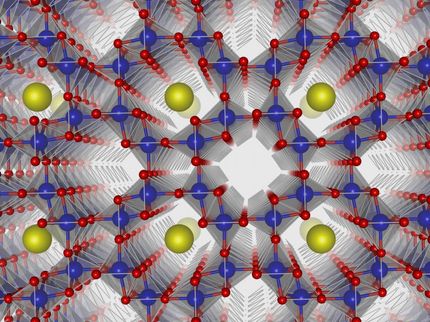BASF hikes research spending to new record level
Joint laboratory for batteries and electrochemistry opens at Karlsruhe Institute of Technology
In 2010, BASF’s research and development (R&D) expenditure reached a new record level, rising to nearly €1.5 billion (previous year 2009: €1.40 billion). The company attaches great importance to continuity in R&D and has further increased its commitment even in tough times, says Dr. Andreas Kreimeyer, Member of the Board of Executive Directors and Research Executive Director, at the company’s research press conference in Ludwigshafen. “Research and development are the foundations to secure our future. BASF will therefore also be increasing its R&D spending in the new year 2011, the International Year of Chemistry,” emphasizes Kreimeyer.
More than 9,600 R&D employees are working in international and interdisciplinary teams on about 3,000 projects aimed at finding answers to the challenges of the future. “We are participating in about 1,900 cooperative projects worldwide. This international and interdisciplinary know-how Verbund helps us to bring innovations more rapidly into the markets. This gives us an edge in global competition,” adds the Research Executive Director.
Major prerequisites for successful research are the right choice of strategic research topics, excellent project management and a smoothly functioning infrastructure. For example, BASF had set itself for 2010 the goal of generating sales of €6 billion with new and improved products and applications that have been on the market for less than five years. The company overachieved this goal by a substantial margin. One of the products involved is the new herbicide Kixor® which is turning out to be a real blockbuster, as well as novel catalysts used to break down nitrogen oxides in diesel-fueled vehicles. We are therefore looking optimistically into the future: by 2015, BASF wants to be generating between €6 and €8 billion in sales through innovation.
Innovative solutions for the mobility of tomorrow
The chemical industry is making decisive contributions to the mobility of tomorrow. This applies to the classical internal combustion engine and to hybrid drives and future electric cars. Innovation through chemistry allows energy-efficient and sustainable solutions: from plastics for lightweight construction and heat management, through innovative fuel additives to materials for high-performance and safe batteries. “Through our research, we want to develop products and technologies that will secure individual flexibility and mobility while protecting the environment and climate,” explains Dr. Andreas Kreimeyer. “In particular electromobility offers us the opportunity to drive forward a fundamental change in technology. We will use our competence in chemistry to help bring about a breakthrough in electromobility.”
In the next five years, BASF will be investing a three-digit million sum for battery-related activities. These include the company’s own R&D programs devoted to optimizing lithium-ion technology and developing completely new battery concepts, and cooperations with our partners, for example in the research network Electrochemistry and Batteries. Part of this investment is also being channeled into the production plant for advanced cathode materials already under construction in Elyria, Ohio (U.S.), sponsored by the U.S. Department of Energy. This new facility with an investment volume of more than $50 million is scheduled to supply the market with cathode materials for the production of high-performance lithium-ion batteries from mid-2012.
Joint laboratory at the KIT researching batteries of the future
Together with the Karlsruhe Institute of Technology (KIT), in January BASF founded a joint laboratory for the development of innovative battery materials. This “Batteries and Electrochemistry Laboratory” (BELLA) in Karlsruhe combines BASF’s electrochemical know-how in industrial applications with the basic research results of the KIT. The aim of this cooperation is to translate research findings more rapidly into products for high-energy battery systems.
These activities are focused on increasing the lifetime of batteries, the use of high storage capacity materials and the safety of battery systems. The partners will be jointly investing about €12 million into these activities in the next five years. In initial projects scientists are, for example, developing ceramic ion conductors for use as protective layers in future battery generations.
Other news from the department business & finance
Most read news
More news from our other portals
See the theme worlds for related content
Topic World Battery Technology
The topic world Battery Technology combines relevant knowledge in a unique way. Here you will find everything about suppliers and their products, webinars, white papers, catalogs and brochures.

Topic World Battery Technology
The topic world Battery Technology combines relevant knowledge in a unique way. Here you will find everything about suppliers and their products, webinars, white papers, catalogs and brochures.




























































